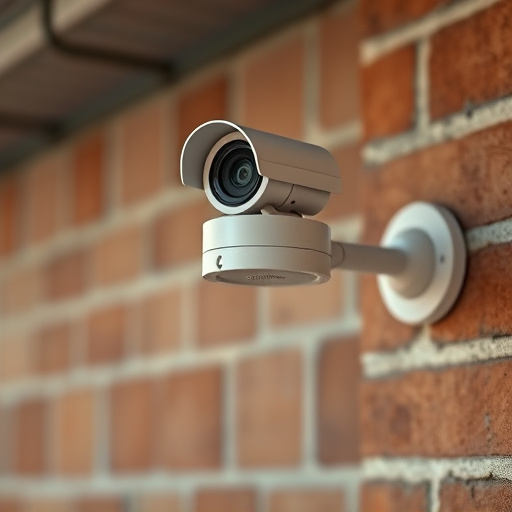Dummy surveillance cameras serve both as deterrents and strategic planning tools, helping property owners and security professionals optimize real camera placement. The "Fake Security Camera Angle Guide" recommends visible, high-angle placements for deterrence while discreetly integrating them into the environment to prevent blind spots. By covering critical areas like entrances and exits with realistic setups, security is enhanced without compromising aesthetics or legal/ethical considerations, including respecting privacy laws and marking decoys as such.
In today’s world, dummy surveillance cameras offer a cost-effective way to enhance security without the need for extensive physical setups. This comprehensive guide provides expert tips on optimizing their placement for maximum effectiveness. From understanding the purpose of these fake security cameras to creating realistic appearances and navigating legal considerations, we cover all you need to know to deploy them strategically. Discover the best angles and locations to deter potential threats while ensuring ethical use in your environment.
- Understanding the Purpose of Dummy Cameras
- Choosing the Right Placement for Maximum Effect
- Creating a Realistic Appearance and Setup
- Legal Considerations and Ethical Use of Dummy Surveillance Cameras
Understanding the Purpose of Dummy Cameras
Dummy surveillance cameras, also known as fake security cameras, serve a dual purpose in enhancing physical security and deterring criminal activity. Beyond their visible deterrent effect, strategically placed dummy cameras provide valuable guidance on optimal real camera placement. Understanding the angles and positioning of these fake devices offers a Fake Security Camera Angle Guide for property owners and security professionals alike. By emulating legitimate camera locations, dummy cameras help identify areas that may require additional surveillance equipment, thereby optimizing overall security measures.
Choosing the Right Placement for Maximum Effect
Choosing the right placement for dummy surveillance cameras is key to achieving maximum security and deterrence effect. When positioning these fake cameras, consider both visible and hidden locations. Strategically placing them in plain sight can serve as a powerful visual deterrent to potential intruders, as it conveys that your property is under constant observation. However, cleverly integrating them into the environment, like mounting them on trees or hiding them behind window coverings, can provide an additional layer of protection while maintaining an aesthetically pleasing appearance.
The angle at which these dummy cameras are positioned also plays a crucial role in their effectiveness as a Security Camera Angle Guide. Aiming them towards common entry points, such as doors and windows, ensures that these high-risk areas are consistently monitored. Additionally, adjusting the camera’s field of view to capture a wide area can help prevent blind spots, ensuring comprehensive coverage for enhanced security.
Creating a Realistic Appearance and Setup
When placing dummy surveillance cameras, one of the most crucial aspects is creating a realistic appearance and setup. This involves positioning the cameras at angles that mimic genuine security camera installations. A Fake Security Camera Angle Guide can be your secret weapon here. By following such guides, you can learn how to strategically place the cameras to deter potential intruders, as they’ll believe real surveillance is in effect.
Imagine a typical security setup with cameras covering key areas—entrances, exits, and common gathering points. Replicate this layout for dummy cameras, ensuring they’re positioned at realistic heights and angles. Consider factors like mounting styles (wall-mounted, ceiling-mounted) and camera orientation (side view, top down). This level of detail not only makes the setup look authentic but also serves as a powerful deterrent.
Legal Considerations and Ethical Use of Dummy Surveillance Cameras
When placing dummy surveillance cameras, it’s crucial to understand and respect legal considerations and ethical guidelines. While fake security cameras can be an effective deterrent, their use must adhere to privacy laws and regulations. In many jurisdictions, there are strict rules regarding video surveillance, including requirements for consent, notice, and the purpose of monitoring. For instance, in some areas, it’s illegal to place a camera where individuals have a reasonable expectation of privacy, such as bathrooms or changing rooms.
Ethically, dummy cameras should be used responsibly and transparently. They should not mislead people into believing they are actual surveillance devices, as this could foster a culture of distrust and concern for personal privacy. Instead, consider using them as part of a broader security strategy, clearly marked as decoys to deter potential criminals. Always consult local laws and industry best practices when implementing fake security camera angles to ensure compliance with the Fake Security Camera Angle Guide and maintain a harmonious relationship within your community.
Dummy surveillance cameras, when strategically placed, can serve as an effective deterrent for potential intruders. By understanding their purpose, selecting optimal locations, ensuring realistic appearances, and adhering to legal guidelines, you can create a convincing Fake Security Camera Angle Guide. This approach not only enhances home or business security but also promotes peace of mind in knowing that your property is well-protected.
